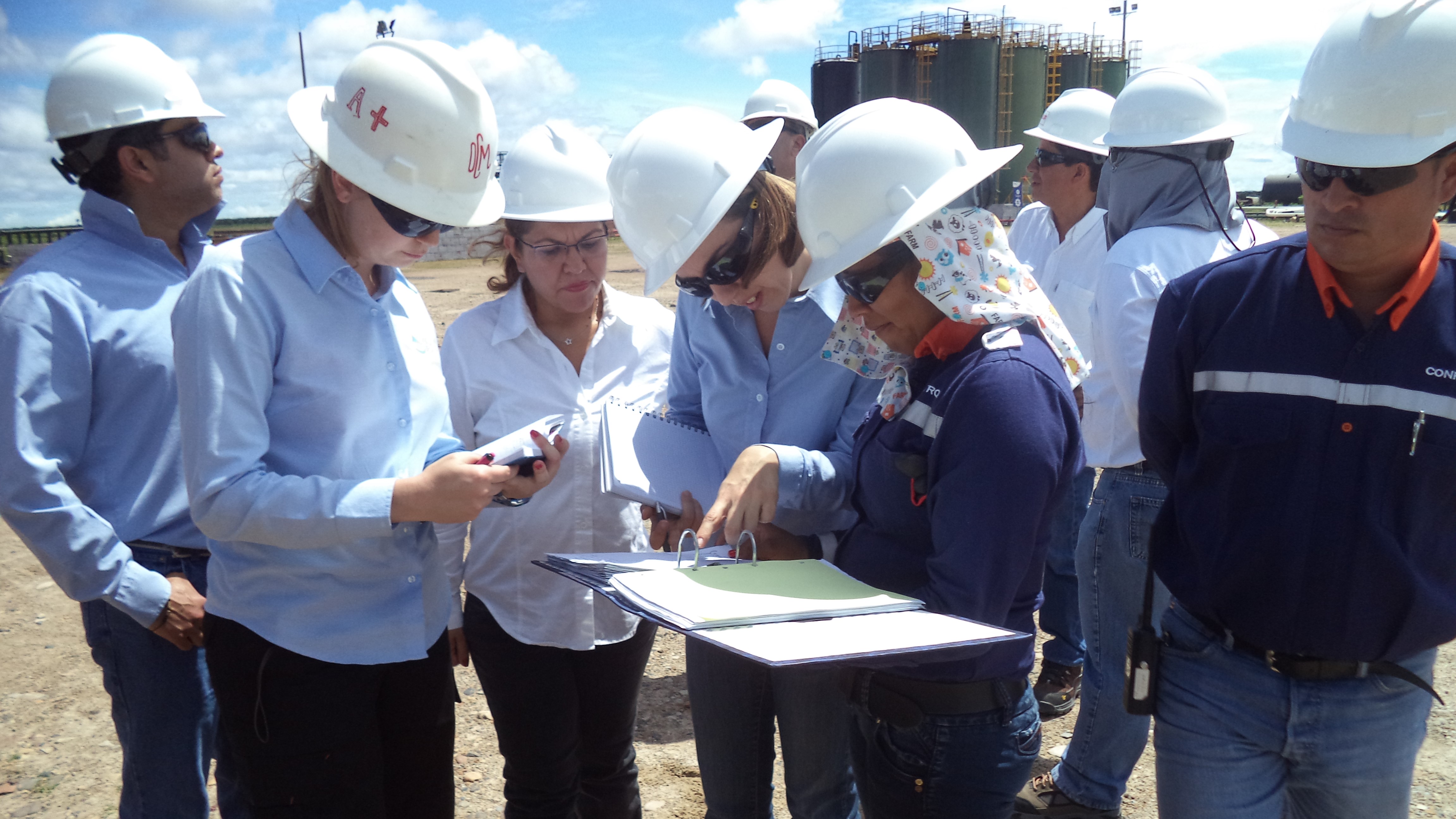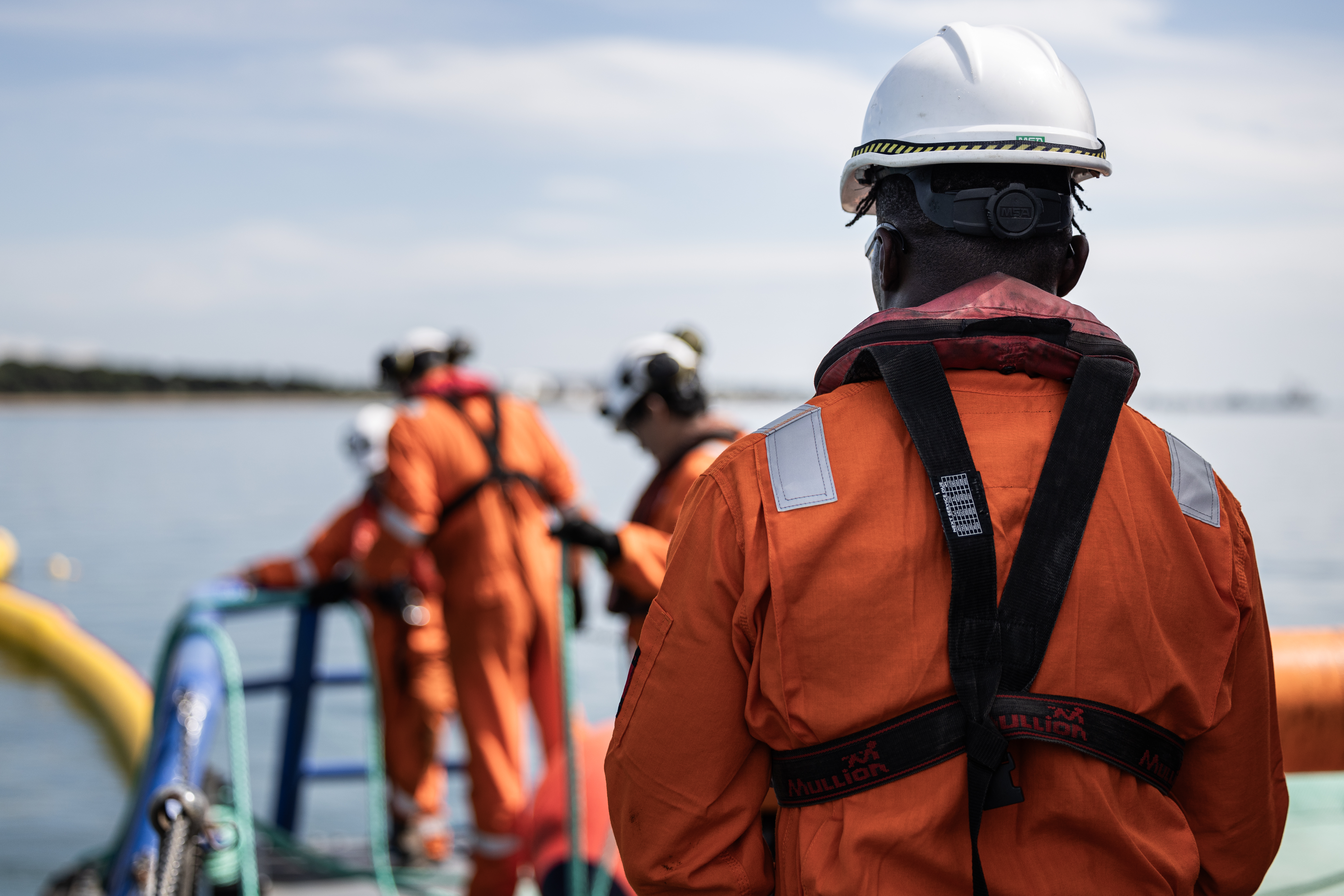¿Qué es la planificación de contingencia?
Las buenas iniciativas de prevención pueden contribuir en gran medida a reducir el riesgo de contaminación. Sin embargo, a pesar de los mejores esfuerzos, inevitablemente ocurrirán derrames. Cuando esto sucede, es necesario garantizar que existan medidas de preparación eficaces que proporcionen una respuesta oportuna y coordinada para limitar las consecuencias adversas de los incidentes de contaminación relacionados con el petróleo.
What Does Contingency Planning Involve in Oil Spill Response?
Good prevention initiatives can go a long way in reducing the risk of pollution. However, despite best efforts, spills will inevitably occur. When this happens, it is necessary to ensure that effective preparedness measures are in place that will provide a timely and coordinated response to limit the adverse consequences of pollution incidents involving oil.
What Does Contingency Planning Involve in Oil Spill Response?
Contingency planning plays a pivotal role in environmental protection, particularly in the context of oil spill management. Despite the significance of preventive measures, oil spills resulting from global oil exploration, production and transportation still happen.
In response to these incidents, robust preparedness measures are essential to ensure a swift and coordinated response that minimises the adverse consequences.
The benefits of contingency planning are multifaceted and include:
-
Enhanced Response Efficiency: Contingency planning allows for the development of pre-prepared response strategies aimed at reducing ecological, economic, and amenity damage. This results in a more effective and efficient response to oil spill incidents.
-
Reiteration of Environmental Priorities: using NEBA or SIMA, Contingency planning reaffirms the environmental priorities of both businesses and governments in the preparedness phase, emphasising their commitment to environmental protection and its responsible management.
-
Improved Public Perception: Contingency planning enhances public and media understanding of the industry's positive efforts in environmental preservation.
Ultimately, oil spill contingency planning serves as a critical tool in mitigating the impact of oil spills, safeguarding economic and ecological well-being.

What Constitutes a Contingency Plan?
Contingency plans are a proactive strategy to account for a disruptive event such as an oil spill. Individuals, teams, and organisations minimise the impact of such an event with the help of a contingency plan, ensuring preparedness for when an incident occurs. Contingency planning is a component of business continuity, disaster recovery and risk management. A contingency plan will provide structure for the management and implementation of response operations and allow the user to respond more readily to an incident by following the guidance. Oil spill contingency planning is the process of developing a suitable spill response capability that complies with the regulatory framework and is commensurate with the oil spill risks of an organisation or facility.
A comprehensive oil spill contingency plan is crucial for effectively preparing for and responding to oil spill incidents, ensuring a swift and efficient response. It serves as a proactive strategy document, offering structure and guidance for response operations within broader frameworks like business continuity and disaster recovery.
An OSCP can vary depending on content type, company and legislative requirements, but will typically encompass the following key elements:
- Spill Impact Mitigation Assessment (SIMA) for one mutually agreed-upon scenario, typically the worst-case, developed in collaboration with relevant stakeholders using available data. The resulting matrix will be incorporated into the OSCP.
- Strategic logistical details, including the identification of primary airports and associated flight times.
- Overview of feasible and pertinent response techniques.
- Information on source control measures and indicative response times.
- Guidelines for generic oil spill response waste management.
- Country-specific information on oiled wildlife response, when available. Stakeholder engagement will be sought with their consent for inclusion in the plan, if pertinent.
Fundamentally, the development of the OSCP will entail an in-depth analysis of oil spill risks to identify planning scenarios that encompass a spectrum of response challenges. OSRL will recommend suitable response techniques tailored to these planning scenarios, ensuring comprehensive preparedness. This plan, typically comprising an Action Plan and Reference Information, ensures clear and actionable guidance for effective response implementation, playing a vital role in mitigating the adverse effects of oil spills.
How Does an Oil Spill Contingency Plan (OSCP) Assist During Spill Incidents?
Guiding the Response Process for Various Spill Tiers
During an oil spill, the contingency plan will guide the user on how to respond to an oil spill of any tier specific to the organisation. It will facilitate an effective and efficient initial response to incidents. It will provide the decision-making tools and information needed to organise and support an ongoing or escalating response while adjusting to the realities of changing conditions. The OSCP will provide initial actions to take in the form of a flow chart and key action cards for specific roles in both the tactical and strategic teams. Stakeholders will have key contact details for notification and mobilisation for assistance. There will also be guidance on how to set up the response team and possibly integrate with the national authorities if responding in joint command.
Demonstrating Rigorous Planning through Supplementary Materials
Response actions detail the expectations of the business, helping you understand the national authorities' expectations of you. The available tiered equipment will be listed, allowing you to make response decisions based on the immediate spill and reality.
Supporting documents/appendices should include additional background information or material not directly required during a response. These include planning justification and preparedness details, e.g. risk assessment documentation and Net Environmental Benefit Analysis (NEBA). These documents will be required for regulatory review, planning assessments and plan updates. The combined plan and supporting documentation should demonstrate a rigorous planning process to build the response capability.
Streamlining Communication and Coordination Across Response Teams
The Oil Spill Contingency Plan (OSCP) serves as a systematic blueprint for successful coordination among diverse response teams managing oil spill incidents, ensuring an organized and streamlined effort. It clearly defines the roles and responsibilities of different response teams, designating decision-making authorities as well as communication points and procedures. The plan designates specific individuals and agencies responsible for disseminating information, which helps ensure that critical data is shared promptly among response teams. This streamlined communication network minimises delays and enhances the efficiency of the response efforts.
Equally noteworthy is the OSCP's emphasis on preparedness by promoting regular training exercises and drills. These exercises not only ensure that response teams are well-prepared and knowledgeable about their roles and responsibilities but also serve as forums for testing communication systems and coordination mechanisms. Addressing potential challenges and refining the OSCP based on these exercises, ultimately contributes to efficient communication and coordination during oil spill incidents, ensuring a prompt and effective response when crises occur.
Why is Having an Oil Spill Contingency Plan Essential for Preparedness?
The International Convention on Oil Pollution Preparedness, Response and Co-operation 1990 (OPRC 90) is the international legislation that provides a framework designed to facilitate international cooperation and mutual assistance in preparing for and responding to major oil pollution incidents. Signatory countries play a pivotal role in implementing the OPRC 90 on a global scale. Their responsibilities include:
-
National Response Systems: Signatory nations must establish and maintain a national system for responding to oil pollution incidents, designating a coordinating authority and operational contact point for effective communication and coordinated operations during spills.
-
National Contingency Plans: OPRC 90 mandates the development and upkeep of comprehensive national contingency plans. These plans outline response procedures, equipment, communication protocols, and training in efficient oil spill management. An NOSCP also sets the boundaries and requirements for an operators OSCP in country,
-
Reporting and Information Sharing: Signatory countries must provide the International Maritime Organization (IMO) with information on responsible authorities, response equipment, and agreements related to oil pollution preparedness. This sharing promotes transparency and facilitates resource and knowledge exchange.
-
Cooperation and Assistance: OPRC 90 encourages signatory nations to establish cooperative agreements with other State Parties, bolstering collective response capabilities. The conventions also allow countries to request aid from fellow State Parties during significant pollution incidents, ensuring swift access to resources and expertise.
Overall, alignment with OPRC 90 offers signatory countries access to international cooperation, technical support, and resources during oil pollution incidents. On that same note, the convention fosters the development of national and regional response capabilities, knowledge exchange, and provides training and support through the International Maritime Organization's Integrated Technical Cooperation Programme (ITCP). In essence, the commitment of signatory countries to OPRC 90 enhances the efficiency of oil spill responses, safeguarding both the environment and public health.
References
IPIECA IOGP. (Revision 2016) Contingency planning for oil spills on water. Good practice guidelines for the development of an effective spill response capability.
IPIECA-OGP (2014c). Framework for oil spill preparedness and response. IPIECA-OPG Good Practice Guide Series, Oil Spill Response Joint Industry Project (OSR-JIP). OGP Report Number 520.
¿Sabe cómo respondería de manera eficiente y efectiva durante un derrame de petróleo?
Nuestro servicio de planificación de contingencias es un enfoque sistemático para explorar lo que puede salir mal y los pasos a seguir en una emergencia.







